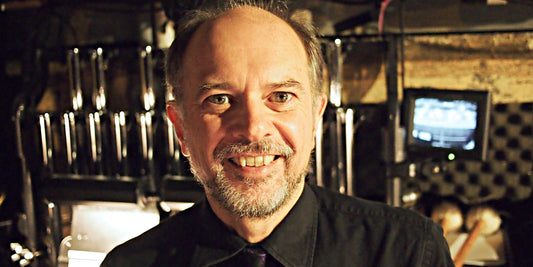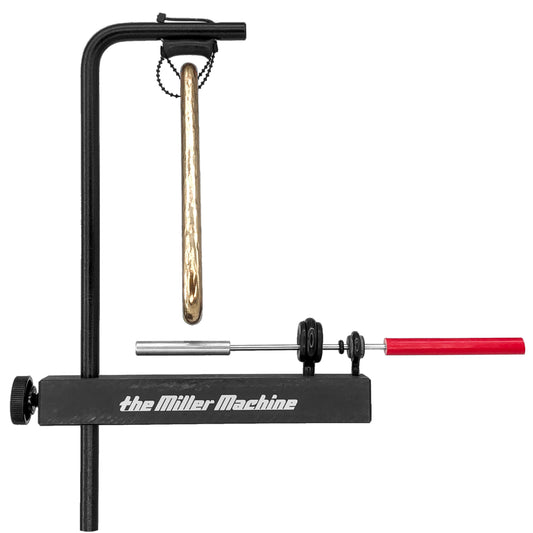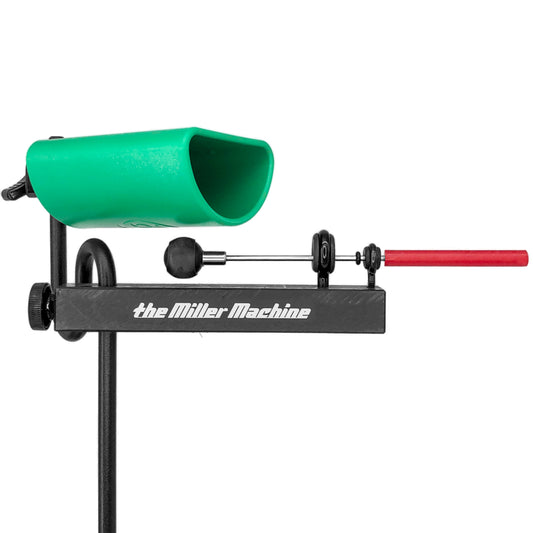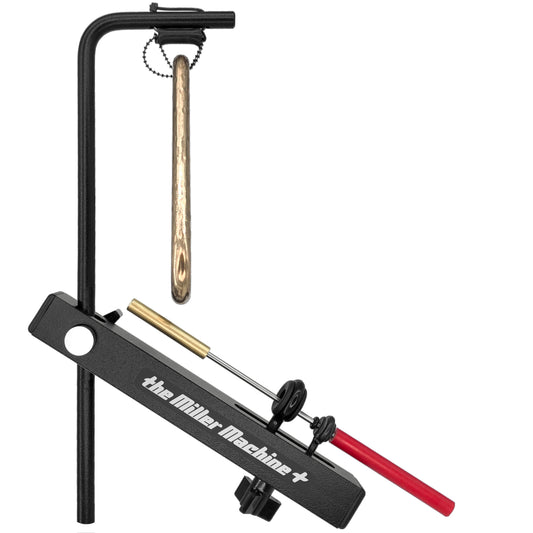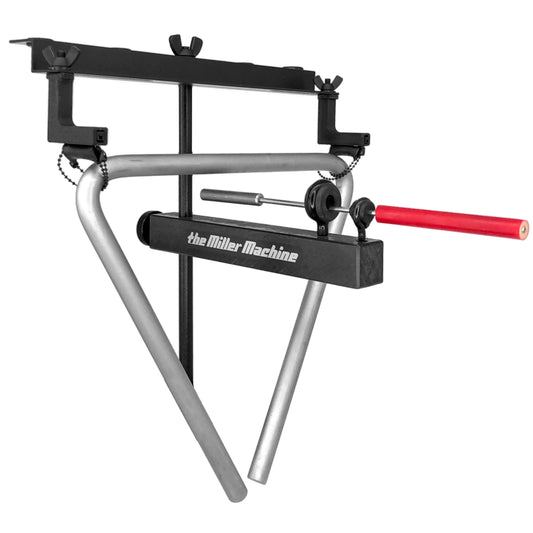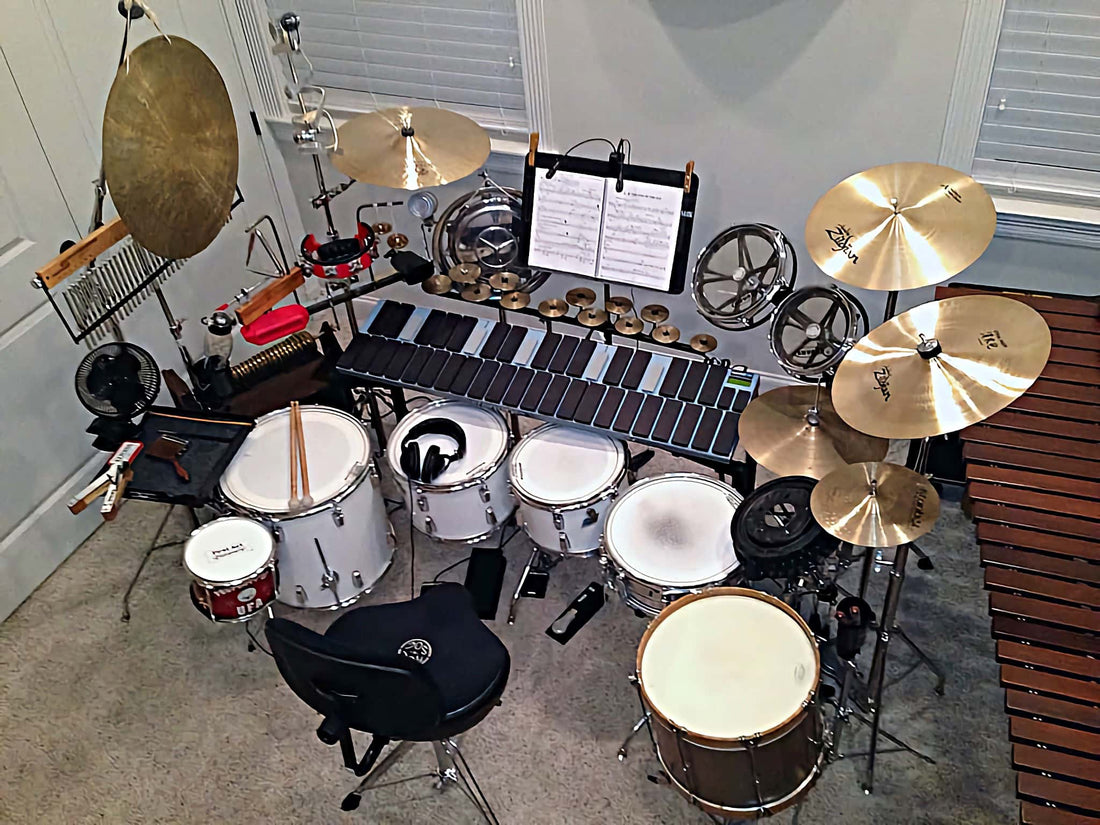
Les Miserables - Guy Gauthreaux
Guy Gauthreaux's setup for Les Miserables at the Theatre Baton Rouge in Baton Rogue, Louisiana.
Write-up below photo.

Guy:
“This is a picture of my Les Miserables percussion setup (UK Tour 2009 version) just before I moved it into an extremely small pit. A standard ‘circle’ setup was not possible because there will be a concrete wall right behind my Roc-N-Soc stool. After listening to a few recordings, I knew I wanted to play as many of the sounds as possible. I asked the Music Director to tell me which instruments he could live without (for space concerns). Once rehearsals started, he never asked me to take anything home! I think this setup exceeds the normal ‘drummer allotted space’ for this pit by almost double.
Although the malletKAT provides the sounds of some of the big instruments (three timpani, concert bass drum, chimes, xylophone, bells, temple blocks) it can be challenging to play some passages that now require both the malletKAT and the acoustic instruments to be played at the same time (‘At the End of the Day’, ‘The Cart Crash’, ‘The Beggars’, and ‘Javert’s Suicide’). I use the wind gong only for the tam tam scrapes and the malletKAT for all tam tam hits and rolls, which are always long and loud, and sound great.
The electronic timpani sound is a bit anemic, almost annoying, mostly due to my keyboard amp. A line out from the malletKAT to the house would help with this, but for some reason they are not doing this for this show. A larger speaker cabinet or sub woofer would also help, but in either case, without a line out, it would not approach the sound of actual timpani, which is a real compromise for me, being a timpanist!
The shows Director opted for a toy drum sound for the ‘Gavroche’ drum, as Gavroche is a little boy in the show, although I favored my Cooperman rope-drum! Not being able to buy a trine, I made a crude one from some aluminum bar stock which sounds pretty good. The car coil spring I found as an alternate trine sounded really bad.
The 70‘s Mercedes Benz hubcap is used for the ‘copper pot’ and ‘garbage can lid’ as it produces many various sounds and definitely ‘elevates’ the look and feel of the setup. The Miller Machine is always invaluable, and works especially well for the loud and sustained triangle rolls in ‘The Wedding Scene’.
This percussion book makes extensive use of soloistic Rototoms throughout, and I recommend using actual Rototoms. You can often pick up a set on eBay for about $100, as I did. The Rototom sound, albeit a bit odd for a drum, works rather well in this reduced orchestration and provides a nice contrast to the regular concert toms. You could probably leave the ‘cricket sound’ out (it’s just one quarter note) as it is covered up by the scoring. But hey, I’m playing that ‘cricket’ note every night, because: I own a cricket sound, there is just enough time to get to it, and the upright bass player laughs every time! The one ‘ratchet’ note is important and lasts much longer than the written quarter note, as it supports the longer Madame Thenardier action on stage.
You may want to add some of the suggested extra snare/field drum notes to fill out the cadences in ‘The People’s Song’, and ‘The Epilogue’. The Director asked for more field drum cadence sound near the end of Act I in ‘One Day More’ to keep the stage movement coordinated. If you have ample space to set up, by all means use a circle setup and have fun. Oh, and don’t bother bringing anything to read, as you play nearly all the time. Oddly enough, playing all of these instruments arranged in such a small space (in the dark) adds a layer of difficulty I did not expect!”
Guy is a proud endorser of Grover Pro Percussion, Cooperman Fife and Drums (they manufacture his signature Concert Model snare drum stick, the Cooperman #7) and GQ Percussion. He also founded Pioneer Percussion, a publishing company that specializes in advanced percussion literature.
Guy is an active freelance and recording percussionist in the Baton Rouge and New Orleans areas.
Les Miserables - Regional - Guy Gauthreaux
July 2013



